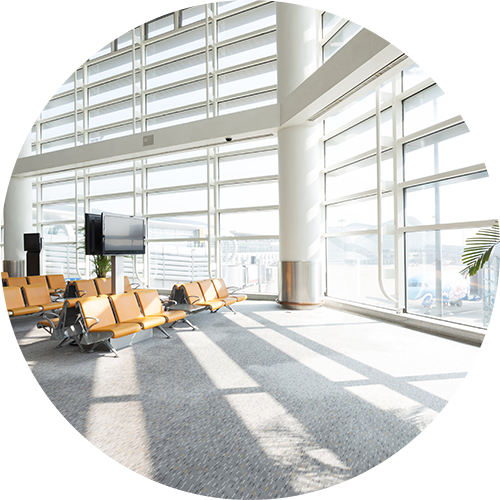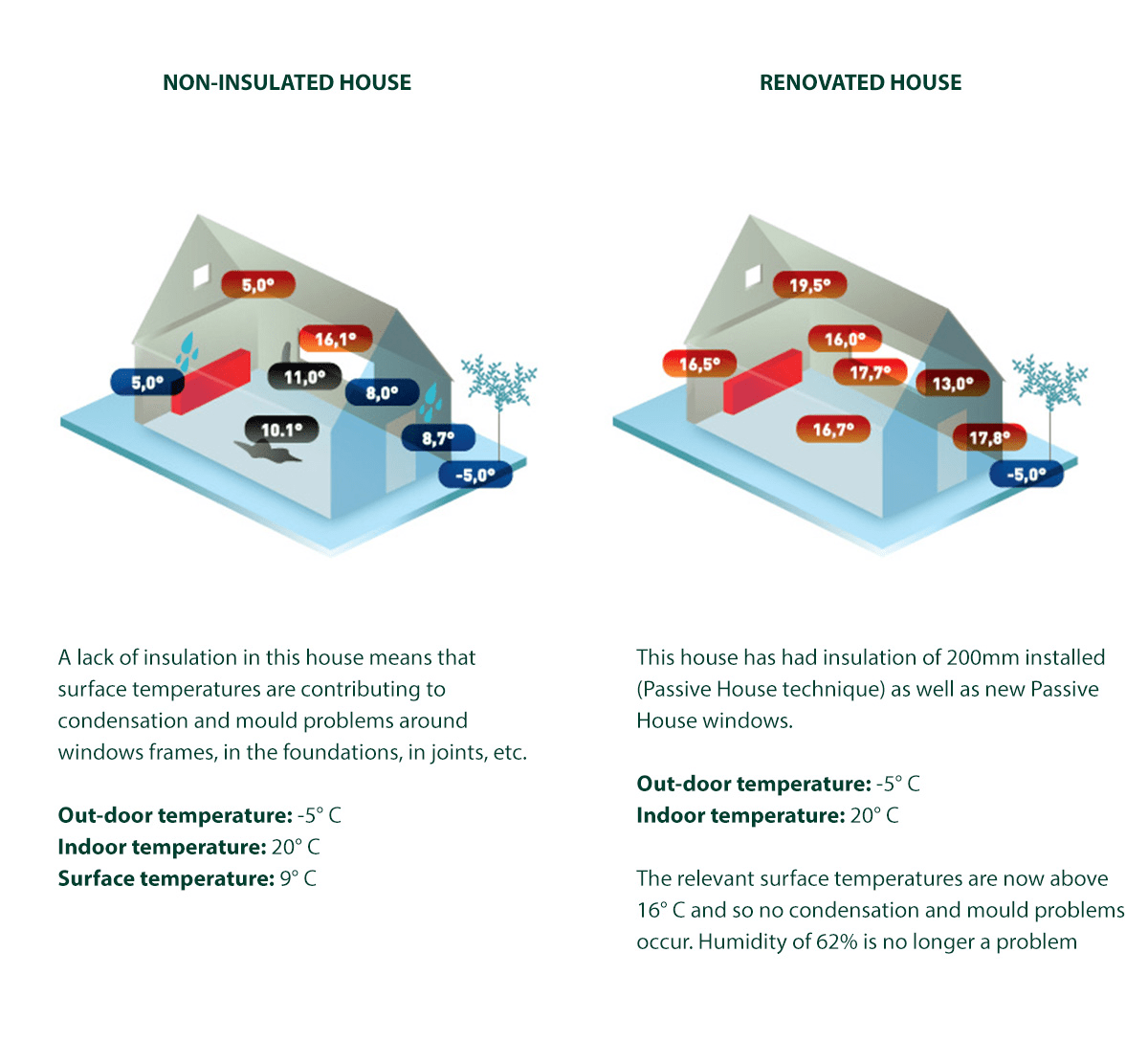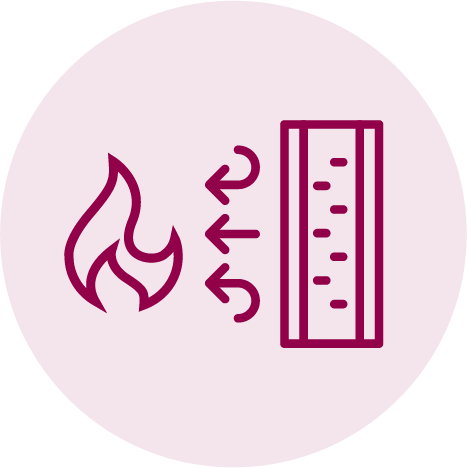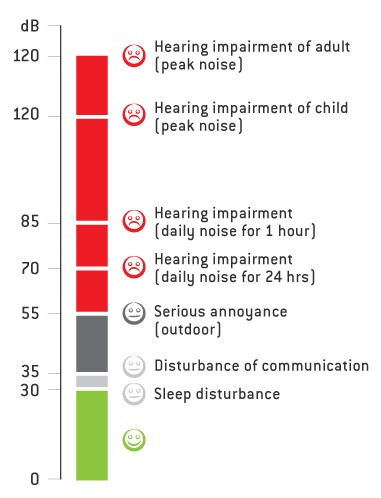Mineral wool has a range of benefits...
Mineral wool insulation enhances comfort & well-being
It’s simple: mineral wool insulation makes buildings better places to live and work.
It enables a comfortable and healthy environment, allowing everyone – including the young, old and vulnerable – to flourish.
Whatever the climate, mineral wool insulation makes it easier to keep a home warmer or cooler for longer.
When ignored, reduced thermal comfort will affect the health and productivity of people living and working in buildings.
Mineral wool insulation saves energy and reduces emissions
Buildings are the EU’s single largest energy user. Heating, cooling and building-use are responsible for over a third of the EU’s total CO2 emissions.
Mineral wool insulation provides a barrier to heat’s natural tendency to flow to colder surfaces. Properly installed, it will cost-effectively reduce heating and cooling demand, increase overall energy efficiency resulting in substantial energy savings and carbon emission reductions over the lifetime of buildings.
How well a material transmits heat through itself is known as thermal conductivity, measured by the lambda value a.k.a. watts per metre per degrees Kelvin (W/mK). The lower the value – the better the insulating material will be. For construction purposes, a material is defined as insulating if its thermal conductivity is less than 0.065 W/mK – and typical thermal conductivity values of mineral wool insulation are between 0.0031 and 0.0045 W/mK (ƛ-value)
Amazingly, up to 80% of all of the energy used by European buildings could be saved by using existing, well-proven technology such as mineral wool insulation. The most sustainable energy is saved energy!
Mineral wool insulation acts as a noise barrier
Unwanted sound or noise pollution inhibits privacy, increases agitation and is bad for human health, concentration and productivity. A 10dB reduction in sound levels is perceived by the human ear as a halving of the audible sound – a well-constructed wall using mineral wool insulation can reduce noise transmission by more than 50dB!
Investing in mineral wool insulation means investing in quieter buildings. It increases sound absorption and restricts sound transfer, providing a highly-effective noise barrier.
Manufacturers have developed a range of products providing protection against unwanted noise pollution, including acoustic ceiling tiles, partition cavity filings, wall linings, floor and roof level sound insulation – as well as absorption solutions.
Typical sound levels









Mineral wool insulation improves indoor climate and outdoor air quality
By saving energy and boosting thermal performance, mineral wool insulation enables a range of societal benefits, including improved outdoor air quality and health – due to less air pollution and a better indoor climate– which leads to reduced sickness and improved worker productivity.
A Eurima-commissioned study found that an improved insulation scenario could help Europeans gain 70,000 life years through improved outdoor air quality enabled by a reduction of emissions and airborne particulate matter resulting in economic savings of around €6.6 billion per year.
At the same time, well-insulated, low-energy buildings have a better indoor climate compared to traditional buildings. Inorganic mineral wool insulation minimises moisture and nutrient conditions necessary for fungal growth protecting both the building and its occupants.

Mineral wool insulation increases fire safety
Fire causes incalculable social, financial and environmental damage – many lives are lost every year. Buildings and their contents contribute to the spread of fire. Mineral wool insulation contributes to safer buildings by delaying fire spread, acting as a fire barrier, slowing down fires and giving emergency services extra time to reach buildings – this helps to save lives, money, property and keeps pollution to a minimum.
Mineral wool insulation is non-combustible does not conduct heat and can resist temperatures above 1,000°C, making it an ideal fire-retardant product. It can sheath building supports and girders, be used as covering for ceilings as well as in fire-resistant doors and partition walls. Mineral wool can be used in critical, high-risk applications such as offshore oil rigs and in petrochemical refineries.
By building sensibly, using adequate fire protection technologies and materials, the risk of fire can be significantly reduced.
Mineral wool insulation drives performance
Mineral wool insulation continues to perform well many decades after its installation.
Research commissioned by Eurima found that mineral wool’s age does not impact its performance – when analysing roof, wall and flat roof insulation in Germany, Denmark, Lithuania and Switzerland, buildings were found to have excellent thermal performance properties up to 55 years after installation, without defects.
Thermal conductivity measurements found that products were fully-functional and water absorption measurements showed continuity in water-repellent characteristics.







 Source: World Health Organisation
Source: World Health Organisation